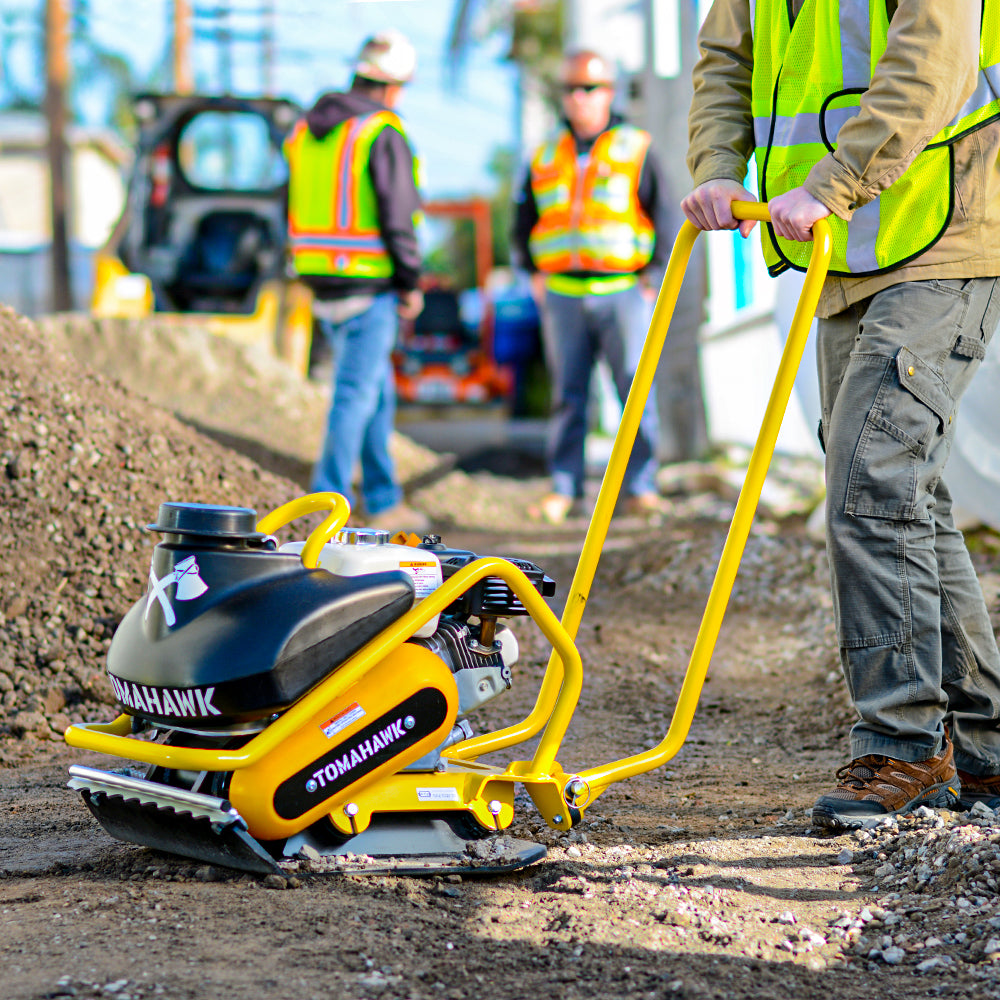1. How do I start my plate compactor?
To start a plate compactor the key is starting the engine. Many plate compactors are self-drive, especially forward plate compactors. To start a plate compactor engine add the recommended amount oil (10W-30) and fuel, preferably above 87 octane.Make sure the fuel valve is open and the choke is closed. Then give the recoil starter several pulls until the engine starts. Once started move the choke to the open position and begin compacting.
2. What do I need to do before compacting?
Before compacting make sure you have an idea of what you will be compacting. Also clear the area of any hazards or dangerous material that might cause injury to yourself or the machine. Additionally, make sure you have the correct moisture and soil you intend to compact. Typically when compacting you only want to make a few passes so thinking this through will help you a lot.
3. My plate compactor engine will not start? How do I fix this?
Is the “on/off” switched to the “on” position? Did you check the oil level. Many engines such as Honda, Subaru, Tomahawk, and Kohler have low oil sensors. To protect your engine from destroying itself without oil the low oil sensor will disable the engines from starting until an suitable amount of oil is added. Other problems to check might be: Is the spark plug working? Has the fuel gone bad? Have you changed the oil filter?Some plate compactors now use Chinese engines which cannot handle the high frequency of vibration and break very quickly. It is worthwhile investing in a plate compactor with a proper compression ratio, torque, and durability, typical of American or Japanese small engines.
4. My plate compactor engine starts but does not compact?
The most common reason for this is the exciter box on the plate compactor is typically not functioning or it is broken. Bring the plate compactor to a service center and change the exciter box. Go to www.tomahawk-power.com to get an explosion diagram and locate the part.
5. What size plate compactor do I need?
This can vary depending on what you are looking to compact. If you need heavy compaction Tomahawk recommends a large reverse plate compactor, preferably 300lbs plus. If it is a small job we recommend our TPC80 forward plate compactor. Before purchasing a plate compactor, definitely consider how often you will be utilizing it.
6. What kind of soil can I use my plate compactor for?
Typically plate compactors can be used for aggregate soils. So this means, gravel, pea gravel, sand, and stones. In other cases you can use plate compactors for cohesive soils, but a tamping rammer or jumping jack, such as the Tomahawk TR68H Rammer, is best suited for this.
7. What options do I need for my plate compactor?
Options to think about are wheel kits for easy maneuverability. Also, lifting bars are excellent for getting a heavy plate compactor into a truck. Additionally, water tanks are crucial for using plate compactors on asphalt and edging. Finally, poly-urethane pads are always an optional accessory from Tomahawk Power for your plate compactor, to compact bricks and doing hardscapes.











